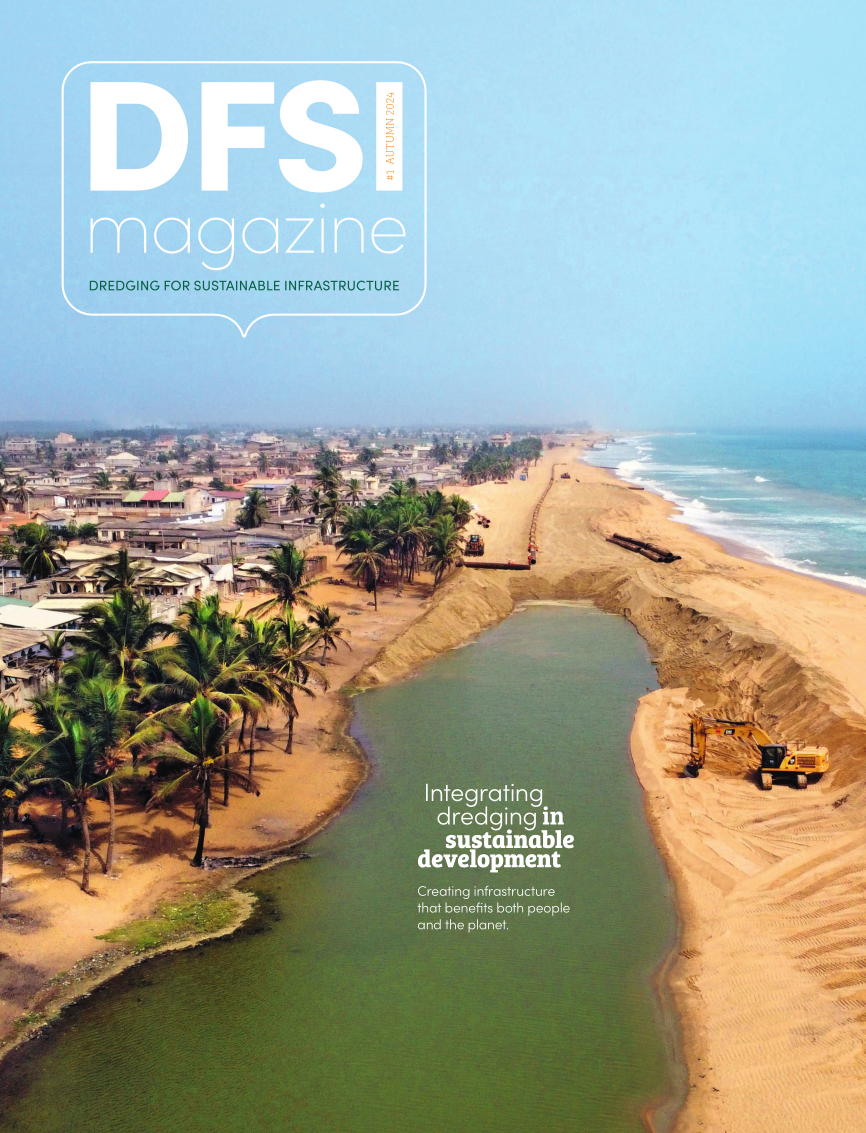Adapted from the second chapter of Dredging for Sustainable
Infrastructure (2018), this article forms the foundation for this
first issue and presents the concept of sustainability in relation to
dredging projects. It describes the approaches and practices that
are key to creating more sustainable solutions and infrastructure
– a modern way of thinking about dredging.
In early 2018, the Government of the Republic of Benin awarded Jan De Nul a design and build contract to protect a 5-kilometre-long stretch of coastline near the town of Avlékété. The project fits into the government’s plan to turn the local coastal zone, which includes a lagoon, sandspit and beaches, into tourist hotspots. Yet the persistent oceanic swell and chronic erosion required an intervention. This is the perfect starting point for a nature- based structure that offers multiple ecosystem services. Its long-term effectiveness, however, hinges on the support of its end users. Stakeholder engagement was therefore central to the project.
Sustainability, innovation and collaboration are key to successfully facing today’s global challenges of grid congestion and climate change. To combat these challenges, the Delta21 concept has been developed in the Netherlands. Located in the mouth of the Haringvliet estuary in the Dutch Delta, the project combines energy storage, flood protection and the restoration of nature. The concept could be elaborated upon and applied worldwide, inspiring governments, public bodies knowledge centres and developers to face climate change and move away from fossil fuels.
Lara Muller (Invest International) and Pieter van Eijk (Wetlands International), discuss the role investors and NGOs can play in driving demand for nature-based solutions.
The coastline of Togo and Benin moves between 1 and, in some places, even 10 metres every year. Land inwards, of course. Climate change is the cause: sea level rise leads to coastal erosion and that poses a direct threat to economic activities and life on the West African coast. “The inhabitants of this region depend primarily on fishing and tourism for their incomes and livelihoods.
Thanks to this coastal protection project, they can benefit from the opportunities the beach and coastal environment offer them, now and in the future,” says Boskalis regional manager Pieter Boer.
Guest editor
Polite Laboyrie
International Director, Witteveen+Bos.
Green solutions in ports, waterways and coastal projects have increasingly become available thanks to many years of research and pioneering efforts in practice. These sustainable solutions have shown to be good alternatives for classic solutions, but application is far from mainstream yet. One of the major hurdles is the lack of access of private capital to finance these kinds of solutions despite the strong interest of capital markets in green infrastructure opportunities. Identifying the hurdles and paving a way forward to overcome these hurdles could therefore help to
increase the uptake of those green solutions.



